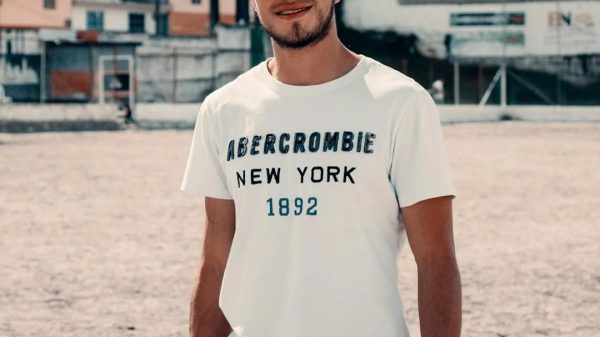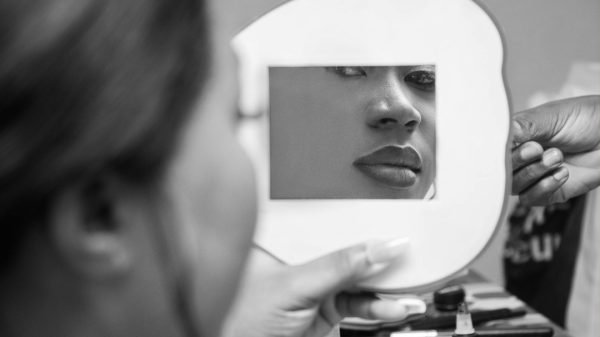Influencer marketing has become a powerful tool in the digital age, allowing brands to promote their products and services by leveraging the reach and credibility of influential individuals. In recent years, influencer marketing has evolved from a niche strategy to a mainstream marketing channel, revolutionizing the way brands connect with their audiences.
Influencer marketing has come a long way since its early beginnings. In the past, brands primarily relied on traditional celebrity endorsements, where high-profile individuals would lend their name and image to a product or service.
While this approach could be effective, it was often expensive and lacked the personal connection that modern consumers crave.
As social media platforms like Facebook, Twitter, and Instagram gained popularity, a new breed of influencers emerged – individuals with a significant following and the ability to sway the opinions and purchasing decisions of their audience. These “micro-influencers” and “macro-influencers” offered a more authentic and engaging way for brands to reach their target market.

Influencer Marketing in the Past
In the early days of influencer marketing, brands often struggled to find the right fit for their campaigns. The focus was primarily on reaching the largest audience possible, leading to partnerships with high-profile celebrities who may not have had a genuine connection to the brand or its products.
This approach had its limitations, as the endorsements often felt inauthentic and lacked the personal touch that resonated with consumers. Additionally, the high costs associated with celebrity partnerships made it challenging for smaller brands to participate in the influencer marketing landscape.
Brands in the 1920s and 1930s started using celebrities to endorse products in print and radio advertisements. This was one of the earliest forms of influencer marketing. With the rise of television in the 1950s, celebrities became even more influential as they appeared in TV commercials, effectively promoting products to a wider audience. Radio personalities and celebrities were also used to endorse products on radio shows, further shaping consumer preferences.
In the 1960s and 1970s, iconic figures from the entertainment industry and sports became the face of magazine advertisements, influencing consumer behavior. In the early 2000s, blogging gained popularity, and bloggers started collaborating with brands to promote products, laying the foundation for modern influencer marketing.
Social media platforms like Facebook, YouTube, and Instagram paved the way for a new era of influencer marketing, with individuals gaining influence and endorsing products to their followers.

Influencer Marketing in the Present
Today, the influencer marketing landscape has evolved significantly. Brands have become more strategic in their approach, seeking out influencers whose values and interests align with their own.
This shift has led to the rise of micro-influencers – individuals with a smaller but highly engaged following who can provide a more personal and authentic connection with their audience.
Micro-influencers have become increasingly valuable to brands, as they often have a deeper understanding of their niche and can create content that resonates with their followers on a more meaningful level. Additionally, the cost of partnering with micro-influencers is generally more affordable, making it accessible for businesses of all sizes.
Micro-influencers have emerged as a powerful force in the world of influencer marketing. These individuals typically have a following of anywhere from 10,000 to 100,000 people, and they are often seen as more relatable and trustworthy than their larger counterparts.
One of the key advantages of micro-influencers is their ability to foster a deep connection with their audience. They are often perceived as experts within their niche, and their followers trust their recommendations and opinions. This level of trust can translate into higher engagement rates and more effective marketing campaigns for brands.
Moreover, micro-influencers are generally more affordable than their macro-influencer counterparts, making them an attractive option for businesses of all sizes. By leveraging the power of micro-influencers, brands can reach a highly targeted audience and achieve a better return on their investment.
Instagram remains a leading platform for influencer marketing, with influencers creating visually appealing content and engaging with their followers through stories, posts, and reels.
A study by Socialbakers found that influencer marketing content on social media platforms received 5.2 times more engagement than brand-generated content, underlining the influence of influencers on these platforms. In addition, 93% of influencer marketing campaigns use Instagram as the primary platform for collaboration with influencers.
YouTube has over 2 billion logged-in monthly users, positioning it as a dominant platform for video content and influencer marketing. When it comes to collaborations, research by Influencer Marketing Hub revealed that TikTok’s engagement rate per post is 17.96%, making it an attractive platform for influencer collaborations.

The Future of Influencer Marketing
As the world of marketing continues to evolve, the future of influencer marketing holds exciting possibilities. One of the most significant trends to watch out for is the increasing use of technology to streamline the influencer marketing process.
AI-powered tools are now being used to identify the most relevant and influential individuals for a brand’s marketing campaigns. These algorithms can analyze vast amounts of data, including social media activity, engagement rates, and audience demographics, to help brands find the perfect influencer fit.
This data-driven approach allows for more targeted and effective influencer partnerships, ensuring that brands are reaching the right audience with their message.
Furthermore, the emergence of VR and AR technologies is opening up new and exciting possibilities for influencer marketing. Brands may begin to explore the use of immersive experiences, where influencers can interact with their audience in a more engaging and interactive way. This could involve virtual product demonstrations, augmented reality try-on experiences, or even live-streamed events where influencers can connect with their followers in real time.
Brands are likely to collaborate with micro and nano-influencers who possess niche expertise in specific areas, allowing for more targeted and authentic brand partnerships. Internal influencers, such as employees and company stakeholders, may play a more prominent role in brand advocacy, showcasing authentic narratives and behind-the-scenes content.
As these technologies continue to evolve and become more accessible, the future of influencer marketing is poised to become even more dynamic and innovative. By staying ahead of the curve and embracing these technological advancements, brands can position themselves for long-term success in the ever-changing landscape of influencer marketing.
Success Stories: Companies That Used Influencers in Their Marketing Strategies
Influencer marketing has become a powerful tool for brands to connect with their target audience and drive engagement. Here are two success stories of companies that effectively utilized influencers in their marketing strategies, along with the process and results achieved.
GymShark, the popular fitness apparel brand, partnered with fitness influencers and athletes to showcase their products in action. The influencers created workout videos, fitness tips, and transformation stories while wearing Gymshark apparel. They shared their content across popular social media channels, including Instagram and TikTok. Gymshark also used a unique affiliate program, offering influencers a commission for every sale made through their personalized discount codes.
As a result of the collaboration with influencers, Gymshark’s revenue grew to over $500 million in 2023. On top of that, the brand’s Instagram following reached over 7 million, largely driven by the engaging content created by influencers.
Strikewild, a well-known iGaming company in the UK, collaborated with gaming influencers to increase its brand exposure and user engagement on social media channels like Facebook. Influencers created high-quality, authentic, and engaging content that highlighted the unique features and benefits of Strikewild’s gaming offerings. The content was designed to be informative, entertaining, and in line with the influencers’ personal brand.
The influencer marketing campaign significantly expanded Strikewild’s brand exposure on Facebook, reaching a larger audience than traditional advertising methods. The campaign led to a 25% increase in user acquisition, with a surge in sign-ups attributed to the influencer-generated content.

Influencer Marketing Trends to Watch Out For
As the world of influencer marketing continues to evolve, it’s essential to keep an eye on the emerging trends that will shape its future. Here are some of the key trends to watch out for:
- Increased Transparency and Regulation: With growing concerns about influencer marketing practices, such as undisclosed sponsorships and misleading content, the industry is pushing for greater transparency and regulation. Brands and influencers will need to be more diligent in adhering to guidelines and disclosures to maintain consumer trust.
- The Rise of Nano-Influencers: While micro-influencers have gained significant traction, the next wave of influential individuals may be even smaller. Nano-influencers, with followings of less than 10,000, are becoming increasingly valuable due to their high engagement rates and perceived authenticity.
- Diversification of Influencer Platforms: While Instagram has dominated the influencer marketing landscape, other platforms like TikTok, YouTube, and even audio-based platforms like Clubhouse are gaining traction. Brands will need to diversify their influencer partnerships to reach their target audience across multiple channels.
- Influencer-Led Content Creation: Influencers are becoming more involved in the content creation process, moving beyond just endorsements and product placements. Brands will need to collaborate with influencers to develop authentic, engaging content that resonates with their audience.
- Measurement and Analytics: As the influencer marketing industry matures, there is a growing emphasis on data-driven decision-making. Brands will need to invest in robust measurement and analytics tools to track the performance of their influencer campaigns and optimize their strategies accordingly.
- Influencer-Brand Collaborations: Instead of one-off partnerships, we may see more long-term, strategic collaborations between brands and influencers. This could involve co-creating products, developing exclusive content, or even influencers becoming brand ambassadors.
Conclusion
Influencer marketing has come a long way since its early beginnings, and the future holds even more exciting possibilities. From the rise of micro-influencers to the impact of emerging technologies, the landscape of influencer marketing is constantly evolving, and brands that stay ahead of the curve will be well-positioned for success.
As you navigate the world of influencer marketing, remember to focus on building genuine, authentic partnerships that resonate with your target audience. With the power of social media, embracing data-driven decision-making, and staying attuned to the latest trends, you can create impactful campaigns that drive tangible results for your business.




































































